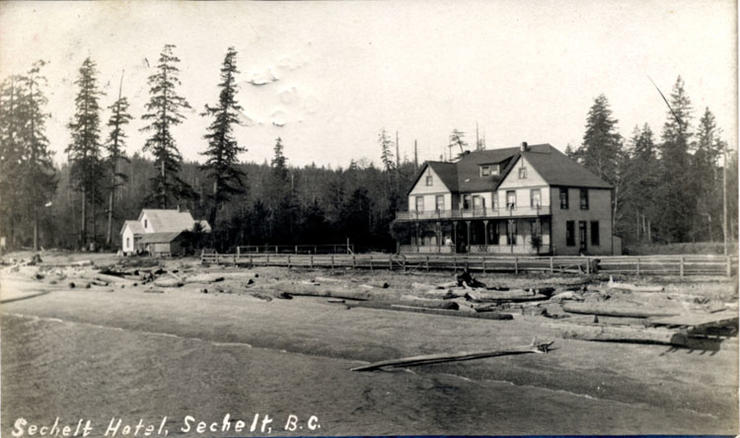Sechelt
Sechelt (49˚28'00" 123˚46'00" S end of Sechelt Peninsula, head of Sechelt Inlet), Sechelt Inlet (49˚36'00" 123˚48'00" S of Jervis Inlet, E of Sechelt Peninsula, NW of Vancouver), Sechelt Islets (In Sechelt Rapids), Sechelt Peninsula (49˚40'00" 123˚55'00" S of Jervis Inlet, W of Sechelt Inlet), Sechelt Rapids (49˚44'00" 123˚53'00" At mouth of Sechelt Inlet). The Sechelt First Nation now spells its name Shíshálh, after its language, Sháshíshálem, which is a branch of Salishan. Many variants of the name have been recorded over the years, including Seashelth, Seshal and Sicatl. The Sechelt people were the first aboriginal group in Canada to achieve self-government, in 1986. They live today mostly at Ch’átlich in the Sechelt Indian Government District, where Paul Durieu established a Roman Catholic Oblate mission in 1868; a large church and residential school were later erected. The non-Native community of Sechelt, which got its start in the 1890s with Herbert Whitaker’s development of a hotel and store, is adjacent to Ch’átlich. Nearby Sechelt Ck and Sechelt Lk are also named after this First Nation group. Sechelt Inlet (or Álhtúlich in Sháshíshálem) is the site of several small provincial marine parks. The Sechelt Rapids in Skookumchuck Narrows can reach peak speeds of 14 knots (26 km/h). E

